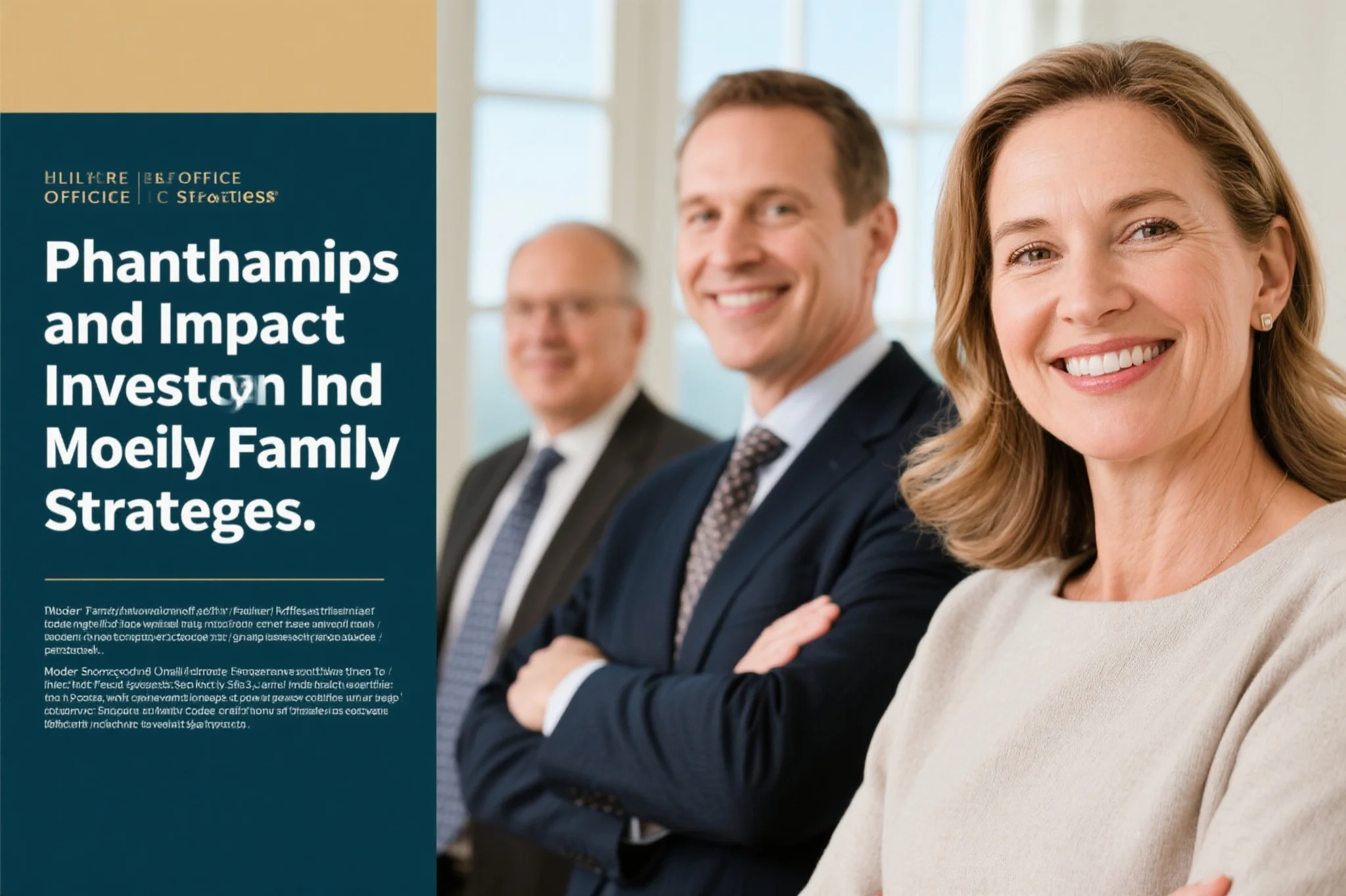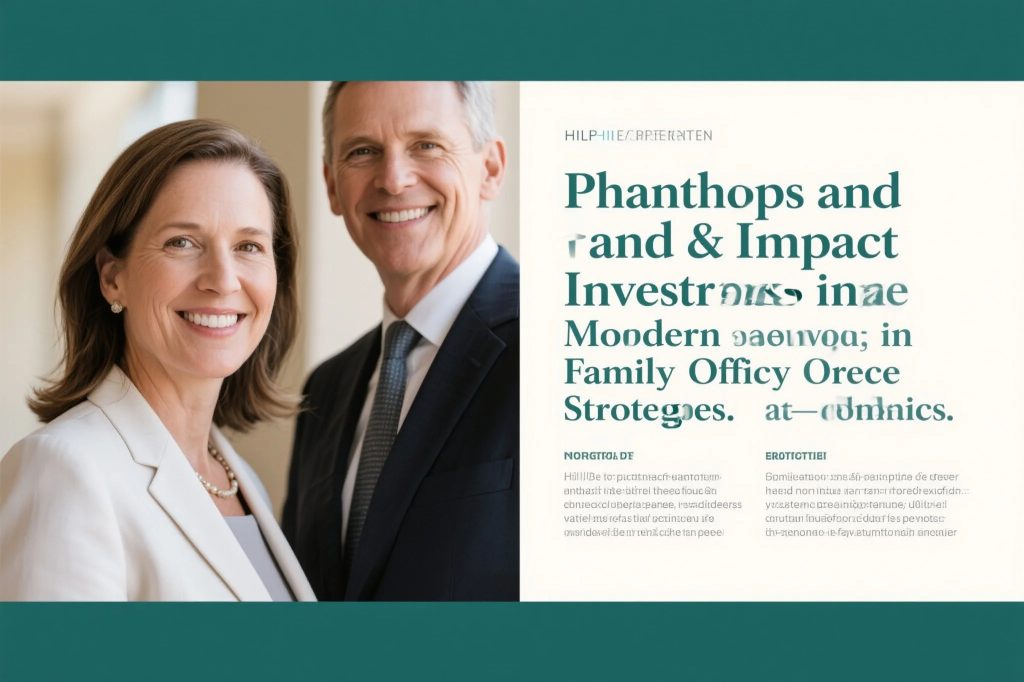
Philanthropy and Impact Investing in Modern Family Office Strategies
Aligning Purpose with Capital
In today’s wealth management landscape, impact investing is no longer a niche concern—it has become a fundamental pillar in how family offices express values through capital. The new generation of wealth holders is increasingly drawn to investments that generate both financial returns and measurable social or environmental impact. Unlike traditional investment vehicles, this method empowers capital to do more than just grow—it enables it to do good. The appeal lies in the duality: sustainable financial performance paired with purpose-driven outcomes.
What sets this approach apart is the strategic framework that surrounds it. Family offices are integrating philanthropy planning with portfolio construction, often blending grantmaking with mission-aligned investment. It’s not simply about writing checks to charitable foundations anymore. Instead, families are asking: How can we use our full financial toolkit to make a lasting difference? This means applying rigorous due diligence to causes they support, aligning investments with personal and familial values, and measuring impact alongside ROI. It’s a balancing act, but one that has matured significantly thanks to better metrics, deeper research, and platforms designed specifically for purpose-aligned capital deployment.
Designing a Long-Term ESG Strategy
Any serious foray into values-based investing requires a structured and adaptable ESG strategy. For modern family offices, environmental, social, and governance factors are no longer compliance checkboxes—they are lenses through which opportunities are evaluated. This is especially true for offices stewarding generational wealth, where every investment must serve both near-term performance and long-term vision. An ESG framework offers a way to assess reputational risk, anticipate regulatory changes, and tap into emerging sectors, all while remaining accountable to a broader societal mission.
More than just avoiding harm, ESG frameworks now focus on advancing good. For instance, a family office may invest in a clean energy fund not just because it’s low-carbon, but because it fosters job creation and energy access in underserved communities. Similarly, governance structures that prioritize diversity, transparency, and accountability are increasingly favored. These standards not only signal responsible business practices but also correlate with resilience and growth. It’s worth noting that many institutional investors are now requiring ESG compliance as a baseline, making it a smart strategy for future-proofing wealth as well.
The Rise of the Private Foundation as a Strategic Hub
In the evolving landscape of philanthropic vehicles, the private foundation remains a powerful instrument. Not merely a tax-efficient structure, a private foundation acts as a control tower for strategic giving. It allows families to formalize their values, centralize governance, and engage future generations in meaningful causes. Unlike donor-advised funds, private foundations offer more flexibility and visibility into operations, although they do require more regulatory compliance and administrative oversight.
Modern family offices are leveraging foundations to create a lasting legacy of generosity while also exploring hybrid models. Program-related investments (PRIs) and mission-related investments (MRIs) allow foundations to deploy capital into initiatives aligned with their charitable mission but structured with an expectation of return. This not only expands the toolbox for impact but also amplifies the lifecycle of philanthropic dollars. It’s a sophisticated approach that treats giving not as an end in itself but as a catalyst for innovation and long-term change.

Preserving Wealth Through Generational Intent
The concept of wealth legacy is deeply personal, yet its execution requires a clear, strategic framework. In family offices, legacy isn’t just about transferring capital—it’s about transmitting values, purpose, and a coherent vision of what the family stands for. This makes impact investing and philanthropy key mechanisms for legacy building. By establishing a consistent approach to giving and investing with intention, families ensure that their wealth doesn’t just last—it resonates.
Intergenerational involvement is crucial here. Many family offices are creating next-gen boards or allocating specific funds for younger family members to lead impact initiatives. This serves dual purposes: education and empowerment. It allows younger generations to become stewards of both financial and social capital, anchoring their identity in purpose rather than entitlement. A thoughtful legacy plan also includes clarity in communication, formalized governance, and continuous review to adapt to changing priorities. Ultimately, it’s about ensuring the family’s story continues with strength and integrity.
Structuring for Longevity and Flexibility
Effective implementation of philanthropy planning and impact strategies hinges on the family office’s operating structure. Many offices are moving toward multi-disciplinary models that integrate philanthropy advisors, ESG analysts, tax strategists, and legal counsel. This approach creates a synergy between giving and investing, allowing each to inform and enhance the other. Flexibility is built into governance documents, allowing family values and strategies to evolve without undermining foundational principles.
Tax planning is also essential. Families need to structure vehicles that balance philanthropic goals with tax efficiency, such as charitable trusts or family-controlled funds. These tools offer the ability to allocate funds toward impactful causes while preserving flexibility in execution. Moreover, the choice between perpetual giving and spend-down strategies needs to be made early and revisited often, with both options carrying unique advantages and trade-offs. The best structures are not static—they adapt as families grow and the external landscape shifts.
Final Thoughts: Redefining ROI
Ultimately, the integration of impact investing and philanthropy in family office strategy is a redefinition of ROI—not just return on investment but also return on intention. As families seek to align their wealth with their worldviews, they’re finding that strategic, intentional structures offer the most enduring rewards. These aren’t just financial systems—they’re expressions of identity, purpose, and vision for the future.
As regulatory scrutiny increases and generational transitions become more complex, having a robust, adaptable strategy rooted in values will be key. Whether through a private foundation, ESG-aligned portfolio, or legacy-driven governance model, the tools are available—and more sophisticated than ever. The question is not whether to integrate purpose with capital, but how deeply, and how effectively, families are willing to commit to making impact part of their wealth journey.